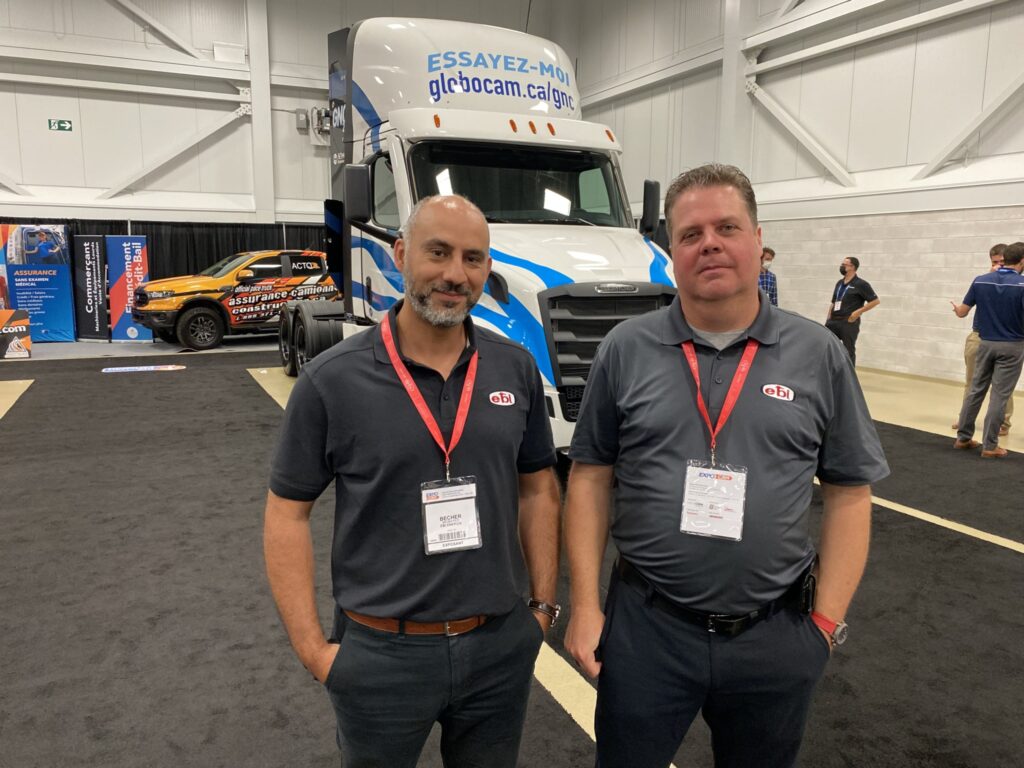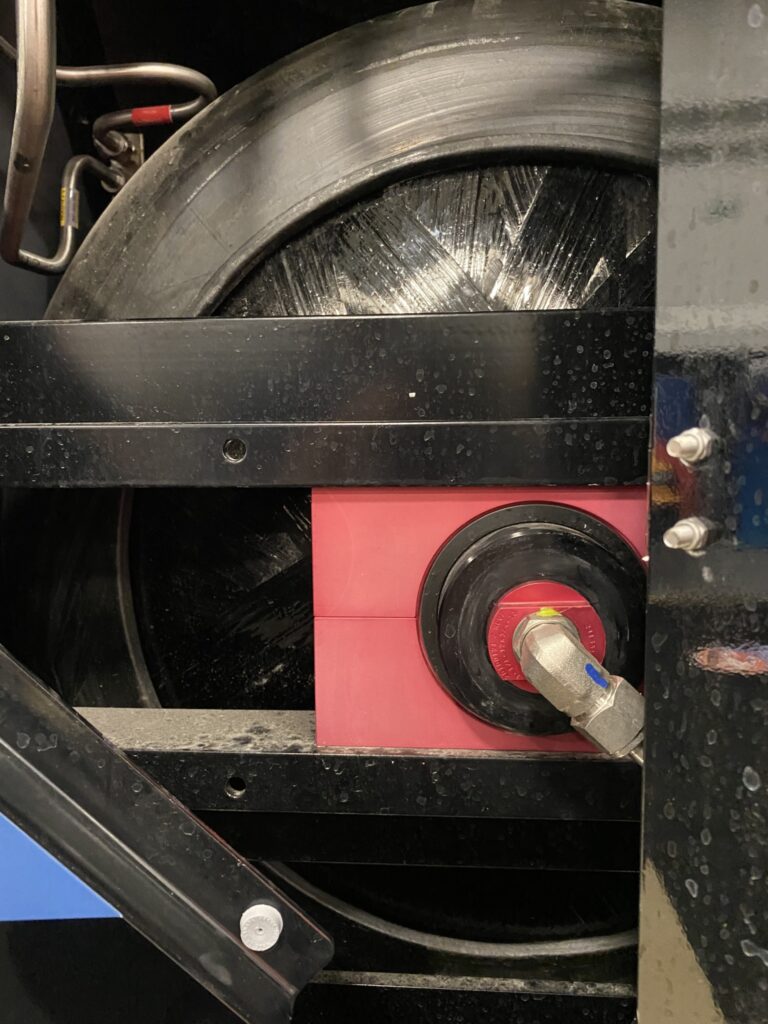EBI Energie promotes CNG trucks as an automatic choice
Compressed natural gas (CNG) has long been promoted as an environmentally friendly alternative to diesel. But Quebec-based EBI Energie believes the fuel could actually become an automatic choice for many fleets.
The natural gas supplier emerged at the Expocam trade show with a CNG-powered Freightliner Cascadia incorporating a 4000 RDS Series Allison automatic transmission. And more than two dozen fleets have already registered to participate in multi-day tests with the truck over the next six months, to see how the new configuration will work in their particular operations.

The configuration also promises to address several traditional barriers to adopting CNG.
“The way the CNG is injected in the engine with an AMT [automated manual transmission], it’s not very efficient. It’s not optimal because you keep stopping and re-initiating an injection,” explains Becher Mobayed, EBI Energie director – natural gas for transportation. But the Allison automatic uses a torque converter, so power is not interrupted while up shifting.
The truck’s 12-liter Cummins Westport ISX12N engine also draws on 175 DGE (diesel gallon equivalents) of fuel, delivering a range of between 800 and 1,000 km before refueling, and that may leave fleets to rethink where such trucks might find a home.
Since the refuse sector has been one of the biggest adopters of CNG equipment, many users mistakenly believe that natural gas trucks are only for that sector, says Richard Prevost, EBI Energie sales representative – natural gas for transportation. “This kind of truck would be at its best to be on a linehaul run or a dedicated run, so you know where to go, you know where to fuel.”

The available fuel volumes can easily be customized as well. As many as 15 different setups can see the tanks mounted everywhere from the back of the cab to the frame rails, addressing wishes such as the need to maintain a window at the back of a day cab.
While there are few public chargers available to support battery-electric trucks, established CNG stations can also be found along the highway corridor linking Windsor, Ontario, and Quebec City.
“CNG or natural gas in general is an alternative to diesel, a cleaner alternative to diesel, which is available today,” Prevost says. “And with RNG [renewable natural gas] we can even reach zero carbon – carbon neutrality.”
The benefits don’t end there. Unlike diesel-powered equipment, there is no need for emissions-related controls such as diesel particulate filters or diesel exhaust fluid. While there are spark plugs to consider, it’s easier to maintain overall, Mobayed says.
The truck can also be refueled on one side of the vehicle, at speeds that are similar to filling up diesel saddle tanks. Each of the four tanks are interconnected, too, so the refueling process can be completed using just a single quick connection.
“There’s no training, there’s no certification,” Mobayed adds, referring to how that can be done by any driver. “There’s no need for gloves or masks or goggles or long sleeves. This is not LNG [liquefied natural gas].”
There are still some unique operating considerations, though. Drivers, for example, should understand how ambient temperature affects fuel pressure, so they know why a fuel dispenser might stop before reaching 3,600 psi on a cold day, or why the pressures might rise to 4,000 psi when being pulled into a warm shop.
An additional in-dash gauge helps to answer other related questions. Such pressure changes have been known to lead to wide sweeps in the needle on a traditional fuel gauge. Hexagon Agility’s Blue iQ gauge identifies pressure in the tank and calculates the distance that can be traveled until it’s empty.
And while the spark plugs may lead to quicker starts in cold conditions, the engines still need to warm up for about 10-15 minutes – until coolant reaches between 160 and 170 Fahrenheit.
From there, it’s simply a matter of hitting the road.
Have your say
This is a moderated forum. Comments will no longer be published unless they are accompanied by a first and last name and a verifiable email address. (Today's Trucking will not publish or share the email address.) Profane language and content deemed to be libelous, racist, or threatening in nature will not be published under any circumstances.